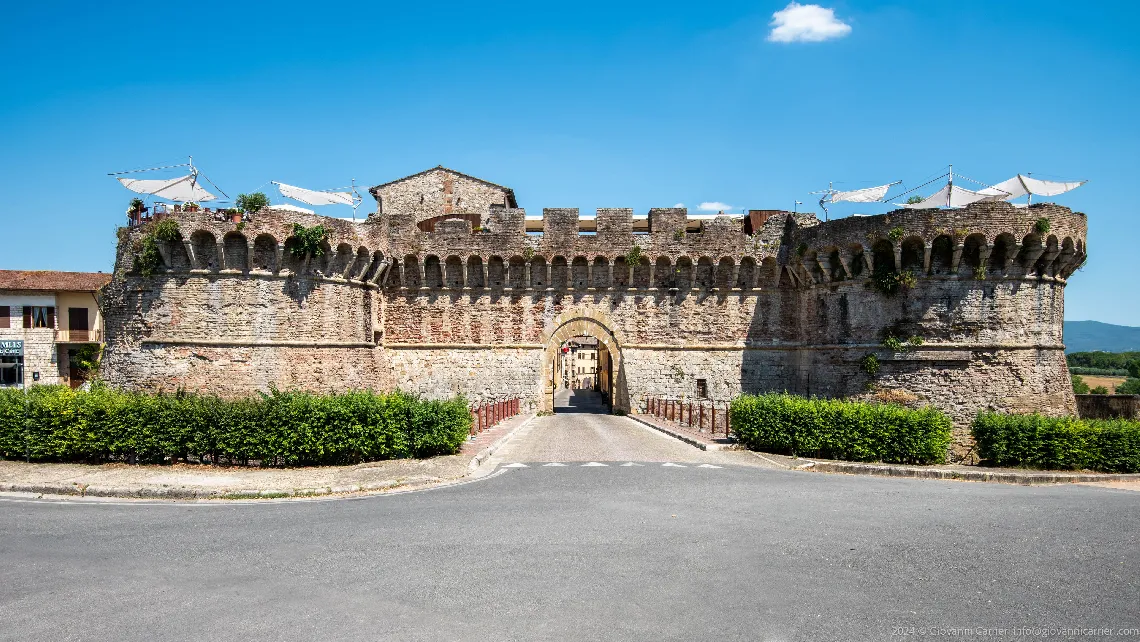Last 5 photo published
on this portfolio

The historic centre of Colle Val d'Elsa
A panoramic view of the historic center of Colle Val d'Elsa, with its characteristic stone houses and terracotta roofs, surrounded by the green Tuscan hills. Dominant on the skyline of the city, stands the bell tower of the Cathedral of Saints Albert and Martial located in via del Castello.

Colle Alta di Colle Val d'Elsa
Colle Alta, the historic heart of Colle di Val d'Elsa, represents a fascinating example of medieval and Renaissance Tuscan architecture. Located on the top of the city, this area is characterized by a series of historical buildings overlooking the picturesque Via del Castello. Among these stands out the majestic Palazzo Campana, with its imposing Renaissance arch that marks the main entrance to the street. Via del Castello is the main street of the historic center and represents a path rich in history and culture. flanked by patrician buildings, including the Palazzo del Capitano, the Palazzo Buonaaccorsi and the Palazzo Giusti, this street offers a journey through time, leading visitors through centuries of architecture and hilly history. The house-tower where Arnolfo di Cambio was born, one of the most famous medieval architects, is one of the points of interest along this road.

Campana building
Palazzo Campana, located in Colle di Val d'Elsa, is a valuable example of sixteenth-century Tuscan mannerist architecture, designed by Giuliano di Baccio d'Agnolo in 1536. Overlooking the homonymous bridge, the palace has an unfinished two-storey façade with a grandiose Renaissance arch and large windows, made of sandstone and plaster. The arch leads to Via del Castello, the main street of the historic center, flanked by numerous patrician buildings.

Porta Nuova di Colle di Val d'Elsa
The Porta Nuova, also known as Porta Volterrana, represents one of the highlights of the fortifications of Castello a Colle Alta, in the city of Colle di Val d'Elsa. This imposing entrance, accessible from the homonymous exit of the highway Firenze-Siena, was built in 1479 thanks to the contribution of renowned military architects of the time, including the Francione, Giuliano da Sangallo, Francesco d'Angelo and Paolo di Francesco. The gate, which serves as the western cornerstone of the city walls, is characterized by a round arch and is presented as a small fortress with a mainly brick structure. The two powerful circular towers that enclose a short section of the walls recall the characteristics of the rocks rather than the Urbian walls. The fortified complex is equipped with a strong escarpture, a double redondoon delimiting the vertical section, a continuous defensive apparatus on stone picks, brick arches and a parapetto with new embellares with embellishments that will be represented by the first buildings and thrones.

Panoramic view of Montalcino
Montalcino, located in the province of Siena in Tuscany, is a municipality of 5.607 inhabitants and is the largest in the province. The name could come from "Mons Lucinus," in honor of the goddess Lucina or a "sacred wood," or from "Mons Ilcinus," meaning "mountain of the holm oaks," plant present in the city coat of arms. Celebre for the production of Brunello and Rosso di Montalcino wines, the village is located to the north-west of Mount Amiata, in the Val d'Orcia. Montalcino houses a majestic fortress, built in 1361, is one of the main symbols of the city, with its pentagonal structure that integrates historical buildings, including an ancient basilica.